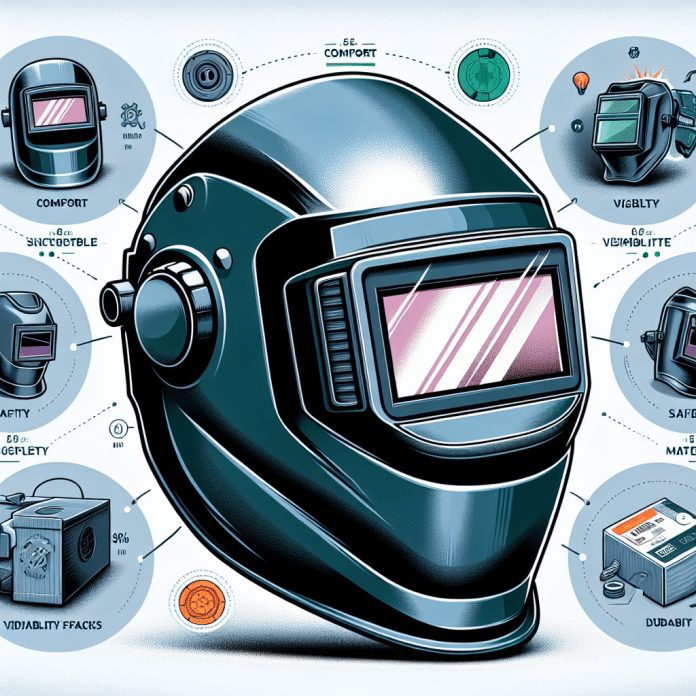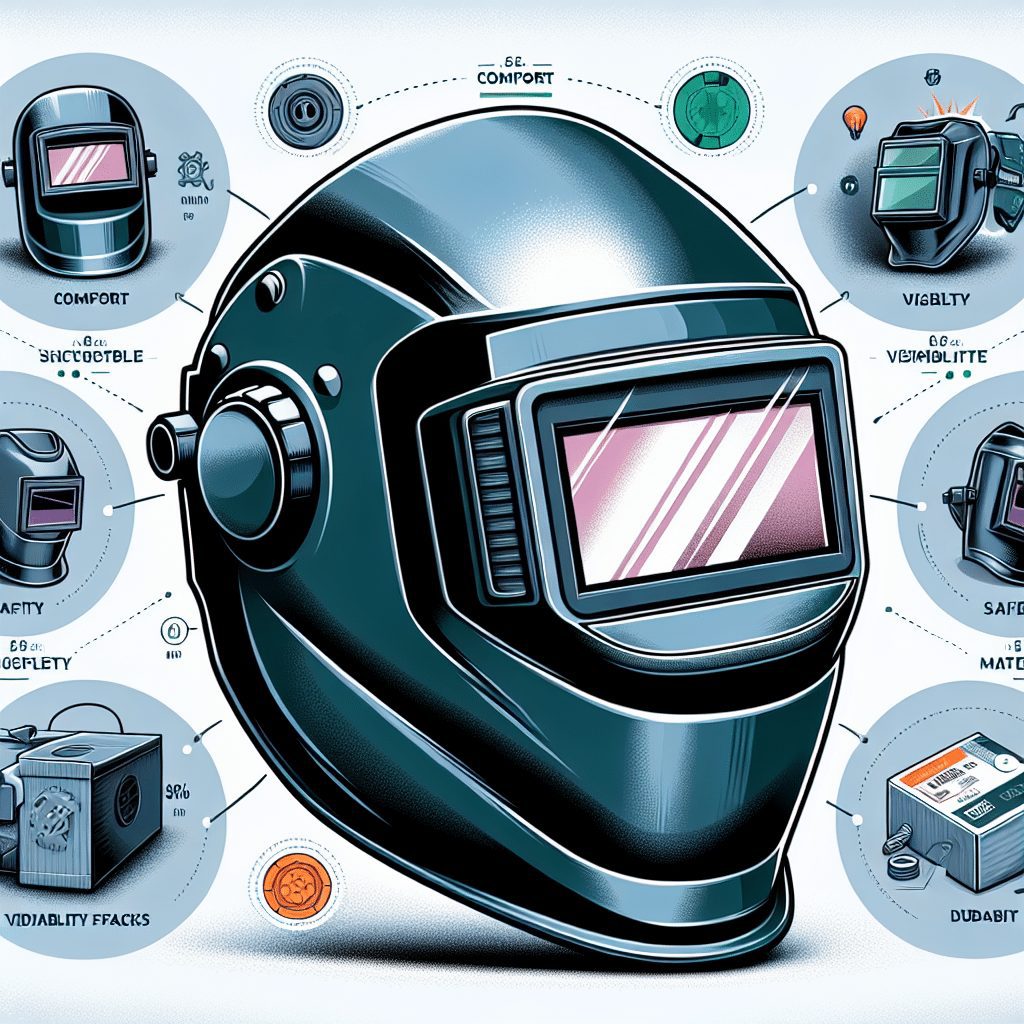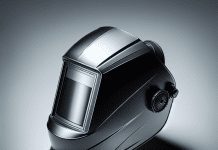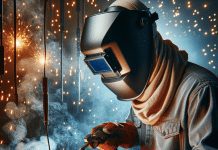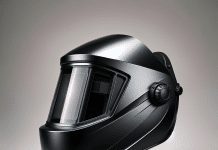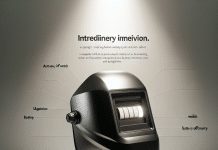In the world of welding, choosing the right helmet is essential for both safety and productivity. With so many options available, it can be overwhelming to determine which helmet is best suited to your needs and budget. Whether you are a professional welder or just starting out, this article provides valuable tips and insights on selecting the perfect welding helmet that will provide the necessary protection and comfort, while also fitting within your budget constraints. Discover the key factors to consider and make an informed decision that will enhance your welding experience.
Review contents
Types of Welding Helmets
Passive Welding Helmets
Passive welding helmets are the traditional and most basic type of helmets. They have a fixed shade lens that is typically a #10 shade, meaning it doesn’t darken automatically. To start welding, you need to snap your head down to engage the lens. While they are simple and reliable, passive helmets require you to constantly lift and lower the helmet during welding.
Auto-Darkening Welding Helmets
Auto-darkening welding helmets are a popular choice among welders due to their convenience and versatility. These helmets feature a lens that automatically darkens when it detects an arc. This eliminates the need to constantly lift and lower the helmet, improving both comfort and productivity. Auto-darkening helmets provide adjustable shade settings, allowing you to customize the level of darkness according to the welding process and environment.
Fixed-Shade Welding Helmets
Fixed-shade welding helmets, as the name suggests, have a single fixed shade level that does not change. These helmets are suitable for specific welding applications that require a consistent shade level, such as MIG or TIG welding. However, they lack the flexibility to adjust the shade according to different welding processes and may not offer optimal visibility in all conditions.
Variable-Shade Welding Helmets
Variable-shade welding helmets offer the most flexibility in terms of shade adjustment. They allow you to select a range of shade levels, usually between #9 and #13, depending on your welding needs. Variable-shade helmets are ideal for welders who work with various welding processes and different environments. They provide better visibility and adaptability, ensuring optimal eye protection and clarity.
Considerations for Comfort and Fit
Helmet Weight
The weight of a welding helmet plays a significant role in comfort, especially during long welding sessions. A heavy helmet can strain your neck and cause discomfort, leading to fatigue. When choosing a welding helmet, opt for a lightweight option that provides adequate protection without compromising on comfort.
Headgear Adjustability
A well-fitted helmet is crucial for comfort and safety. Look for a welding helmet with adjustable headgear to ensure a secure and customized fit. Adjustable settings for head circumference, height, and tilt will allow you to find the perfect fit that minimizes discomfort and provides optimal protection.
Helmet Size and Shape
Consider the size and shape of the helmet, as it should accommodate your head shape comfortably. Some helmets may have a narrow design, while others have a wider fit. It’s important to try different helmets to find the one that suits your head shape and offers a snug fit without being too tight or too loose.
Sweatband and Padding
Sweat and heat buildup can be common issues during welding. Look for helmets that include sweatbands and padding for added comfort and absorption of sweat. These features not only enhance comfort but also help maintain a clear view by preventing sweat from obstructing your vision.
Ventilation
Proper ventilation is essential to prevent overheating and fogging inside the helmet. Look for helmets with ventilation systems that allow the flow of air to keep you cool and prevent the lens from fogging up. Good ventilation will enhance comfort, especially in hot and humid working conditions.
Examining Optical Clarity and Viewing Area
Optical Class Ratings
Optical clarity refers to the quality and sharpness of the lens. A helmet’s optical class rating indicates the visual quality and distortion levels. The higher the rating, the better the optical clarity. Look for helmets with an optical class rating of 1, which offers the highest clarity and minimal distortion.
Lens Reaction Time
The lens reaction time refers to how quickly the lens switches from its natural state to a darkened state. Faster reaction times ensure that your eyes are protected from harmful arc rays instantaneously. Look for helmets with fast lens reaction times, typically around 1/20,000 to 1/25,000 of a second for optimal eye protection.
Viewing Area Size
The size of the viewing area greatly affects your welding experience. A larger viewing area provides better visibility and allows you to see more of your workpiece, increasing accuracy and productivity. Consider a helmet with a sufficiently large viewing area to ensure a clear and unobstructed view of the weld.
Periphery Vision
While the central viewing area is important, also consider the periphery vision. Some helmets may have narrow side views, limiting your ability to see the surrounding workspace. Opt for a helmet that provides a wide field of view, allowing you to have better situational awareness while welding.
Lens Auto-Darkening Speed
The speed at which the lens auto-darkens is crucial to prevent any exposure to harmful arc rays. Consider helmets with fast auto-darkening speeds, as this ensures quick and effective protection. Look for helmets with adjustable auto-darkening settings for different welding processes and lighting conditions.
Understanding Shade Control
Fixed Shade vs. Variable Shade
Fixed shade helmets have a single shade level that does not change, while variable shade helmets allow you to adjust the shade level according to your specific welding needs. Fixed shade helmets are suitable for specific applications, but variable shade helmets offer greater versatility and adaptability.
Choosing the Right Shade Level
The right shade level depends on the welding process, amperage, and personal preference. A darker shade is necessary for higher amperage welding processes to protect your eyes from the increased intensity of light. Consult welding guidelines or speak with experienced welders to determine the appropriate shade level for your specific welding tasks.
Sensitivity and Delay Adjustments
Many auto-darkening helmets offer sensitivity and delay adjustments. Sensitivity controls the helmet’s response to the arc’s brightness, while delay controls how long the lens remains dark after the arc extinguishes. These adjustments allow you to customize the helmet’s performance and ensure optimal eye protection and comfort.
Evaluating Arc Sensors
Number of Arc Sensors
The number of arc sensors in a welding helmet determines the helmet’s ability to detect an arc and accurately darken the lens. Helmets with more sensors provide better coverage and reduce the chances of the lens failing to darken. Look for helmets with at least two sensors, although more sensors may be beneficial for certain applications.
Sensor Placements and Coverage
Effective sensor placement is crucial to ensure the helmet reacts accurately to arc light. Check where the sensors are located within the helmet and how well they cover the entire welding area. Sensitivity of the sensors is also important to prevent any delay in lens darkening, especially when working with intricate welds or multiple arcs.
Sensor Reaction Time
The reaction time of the sensors is a critical factor in eye protection. Faster sensor reaction times ensure that the lens darkens instantly when exposed to the arc light. Opt for helmets with sensors that have rapid response times to provide maximum protection and minimize the risk of eye strain or damage.
Sensor Battery Life
If your welding helmet runs on batteries, it’s essential to consider the sensor battery life. Longer battery life means less frequent battery changes or recharging, enhancing convenience and reducing downtime. Look for helmets with extended sensor battery life to ensure uninterrupted use during long welding sessions.
Sensor Quality and Reliability
The quality and reliability of the sensors directly impact the overall performance and durability of the welding helmet. Research and choose helmets from reputable brands known for their high-quality sensors. Reliable sensors ensure consistent eye protection and minimize the risk of malfunction or failure.
Assessing Safety Standards and Certifications
ANSI Z87.1 Certification
The ANSI Z87.1 certification is widely recognized in the welding industry and indicates that the helmet meets the safety standards set by the American National Standards Institute. Look for helmets with this certification to ensure they provide the necessary eye protection and comply with safety requirements.
EN 379 Certification
EN 379 is a European standard that certifies the performance and safety of welding filters and auto-darkening lenses. Helmets with EN 379 certification have undergone rigorous testing to meet the required standards for optical quality, response time, and protection against UV and IR radiation.
CSA Z94.3 Certification
The CSA Z94.3 certification is a mandatory safety standard in Canada for protective eyewear and headgear. A welding helmet with this certification ensures compliance with the Canadian safety regulations and offers reliable eye protection.
SCC Certification
The Safety Equipment Institute’s Safety Certification Company (SCC) certification guarantees a helmet’s compliance with safety standards. Helmets with SCC certification have undergone thorough testing for optical performance, physical properties, and other critical safety factors.
Additional Safety Features
Look for additional safety features in welding helmets, such as flame-resistant materials, impact resistance, and a sturdy construction. These features provide extra protection against potential hazards like sparks, debris, and external impacts, enhancing overall safety during welding operations.
Balancing Protection and Visibility
Choosing the Right Lens Shade for Your Welding Process
Different welding processes require different lens shades to ensure the right balance of protection and visibility. Consult welding guidelines or experienced welders to determine the appropriate lens shade for your specific welding application. Consider variable-shade helmets if you work with various welding processes to easily adjust the shade level when needed.
Balancing Brightness and Clarity
While a darker shade offers increased protection, it can also reduce visibility. It’s crucial to find a balance between optimal brightness to see your workpiece and adequate darkness for eye protection. Variable-shade helmets provide the flexibility to adjust the shade according to your preference, ensuring both clarity and protection.
Importance of UV and IR Protection
Welding emits harmful ultraviolet (UV) and infrared (IR) radiation, which can cause eye damage if not adequately protected against. Look for helmets that offer reliable UV and IR protection to safeguard your eyes during welding. Ensure that the helmet’s lens meets the required safety standards for UV and IR protection.
Polarized vs. Non-Polarized Lens
Polarized lenses have an additional layer that reduces glare and improves visibility, especially in environments with strong light sources. Non-polarized lenses do not have this additional layer but still provide sufficient eye protection. Consider your working conditions and personal preference to decide whether a polarized or non-polarized lens is suitable for you.
Considering Power and Battery Life
Power Source Options
Helmets can be powered by either replaceable batteries, rechargeable batteries, or solar power. If you choose a battery-powered helmet, ensure that the batteries are readily available and easy to replace. Solar-powered helmets offer the convenience of not relying on batteries and can be a cost-effective option in the long term.
Battery Life and Replacement
For battery-powered helmets, consider the battery life and the ease of battery replacement. Longer battery life means less frequent battery changes or recharging, reducing interruptions during welding. Opt for helmets with easily accessible battery compartments, making it hassle-free to replace batteries when needed.
Solar-Powered Helmets
Solar-powered helmets convert solar energy into power for the lens auto-darkening mechanism. These helmets are environmentally friendly and provide an uninterrupted power source. However, ensure that the helmet’s solar panel is efficient and capable of charging the lens adequately even in low-light conditions.
Backup Power Options
Having a backup power option can be beneficial, especially if you work in locations where consistent sunlight is not available. Look for helmets with dual power options, such as solar power and replaceable batteries. This way, you have a backup power source in case the primary power option is unavailable or depleted.
Setting a Budget
Determining Your Budget Range
Before investing in a welding helmet, determine your budget range based on your welding needs and financial capacity. Welding helmets vary in price depending on their features, quality, and brand. Set a realistic budget range, keeping in mind the importance of safety and long-term durability.
Value for Money
While it’s essential to stick to your budget, prioritize value for money over price alone. A slightly higher investment in a high-quality helmet with the necessary safety features can provide better eye protection, comfort, and durability. Consider the overall value and long-term benefits when making your purchasing decision.
Avoiding Cheap and Poor Quality Helmets
It’s tempting to choose a cheap welding helmet to save money, but compromising on quality and safety can be risky. Cheap helmets may lack reliable eye protection, comfort features, and durability. Invest in a reputable brand and avoid purchasing poor quality helmets that may not meet industry safety standards.
Trying On and Testing Helmets
Visit Local Welding Suppliers
Visit local welding suppliers to try on different helmets and assess their fit, weight, and comfort. Trying on helmets in person allows you to gauge their suitability and find the best fit for your needs. Take your time to compare different brands and models to make an informed decision.
Attend Trade Shows and Exhibitions
Trade shows and exhibitions often showcase a wide range of welding helmets from various manufacturers. Take advantage of these events to try out different helmets and speak with knowledgeable professionals in the industry. They can provide valuable insights and recommendations based on your specific welding requirements.
Rent or Borrow Helmets
If you’re unsure about investing in a specific helmet, consider renting or borrowing one for a trial period. This allows you to test the helmet and evaluate its performance and comfort without committing to a purchase. Take note of the helmet’s features, fit, and overall satisfaction before deciding on a permanent solution.
Utilize Return Policies
Before finalizing your purchase, familiarize yourself with the return policies of the retailer or manufacturer. In case the chosen helmet doesn’t meet your expectations or doesn’t provide the desired comfort and functionality, you can return it and choose an alternative. Ensure that you understand the return process and any associated costs or requirements.
Choosing the right welding helmet requires careful consideration of various factors, including comfort, fit, optical clarity, safety standards, and personal preferences. By understanding the different types of welding helmets and evaluating their features, you can make an informed decision that ensures optimal eye protection and enhances your welding experience. Take the time to try on and test different helmets to find the one that suits your needs and budget, ultimately providing the necessary safety and comfort for your welding endeavors.

